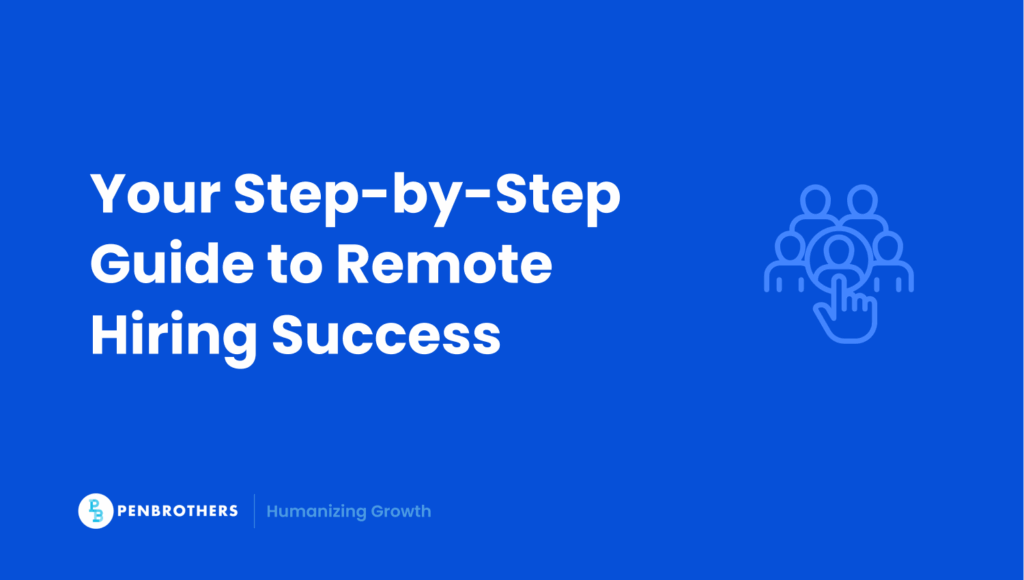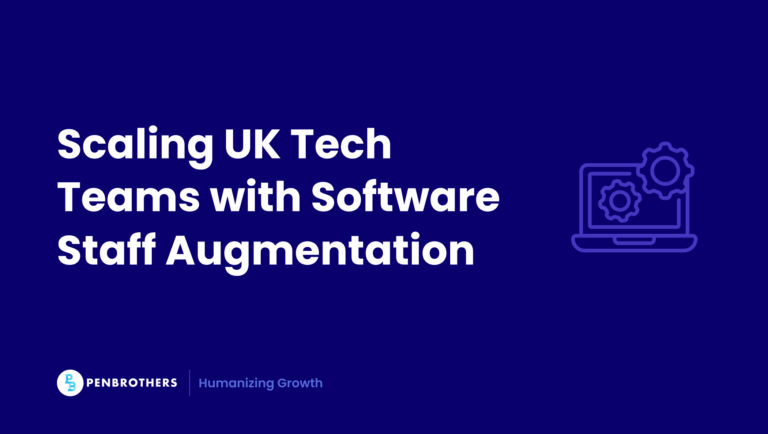Hiring used to be simple: post a job, screen a few locals, make an offer. Today, that model is breaking down. Global candidates expect flexibility. Founders need speed. And talent isn’t waiting around for outdated hiring systems to catch up.
The real challenge? Remote recruitment isn’t just recruiting at a distance. It’s a different game entirely with new rules, tools, and expectations.
If your company is scaling fast or hiring across borders, you don’t need more recruiters. You need a remote recruitment powerhouse: a system that combines global reach, talent intelligence, and operational precision. Here’s how to build it.
What Is a Remote Recruitment Powerhouse, Really?
This isn’t just about filling roles, it’s about building capability.
A true recruitment powerhouse is more than a team of sourcers and schedulers. It’s a well-oiled machine built around:
- Strategic hiring: Aligning talent acquisition with growth goals
- Cross-border agility: Navigating time zones, currencies, and cultures
- Tech fluency: Automating intelligently while keeping the human touch
- Outcome focus: Prioritizing time-to-productivity, not just time-to-hire
When done right, this powerhouse becomes a growth engine, consistently attracting, converting, and onboarding high-quality remote talent at scale.
Think Global, Hire Global, But Strategically
Remote recruiter jobs are no longer about simply casting a wider net, they’re about redefining the way we think about talent access.
Shifting from local hiring to a global-first mindset means:
1. Time Zone Strategy Isn’t Optional, It’s Foundational
Successful global teams don’t just work across time zones, they design around them.
Instead of forcing remote talent to conform to a single time zone, high-performing teams identify overlapping hours that maximize collaboration while still respecting work-life balance.
This shift helps reduce burnout, increase productivity, and retain top performers in markets like the Philippines, Eastern Europe, or LATAM.
2. Cultural Fluency Drives Better Hiring Outcomes
Remote recruiting across regions means navigating cultural nuance in communication, decision-making, and even interview performance.
For example:
- Candidates from collectivist cultures may undersell achievements during interviews
- Expectations around feedback cadence vary between North America and Southeast Asia
- Directness in written communication can be misinterpreted without context
Great remote recruiters understand these dynamics and adjust their approach, leading to stronger candidate experiences and better-fit hires.
3. Legal and Contracting Models Must Be Tailored
Hiring someone in another country is not just a click-and-hire decision. You need to understand:
- When to use an Employer of Record (EOR) for full-time support in markets where you don’t have an entity
- When contractors are appropriate for project-based or flexible roles
- What risks come with misclassification, including fines, back pay, or termination issues
Partnering with a global recruitment provider helps you navigate these complexities while staying compliant and competitive.
Done well, this unlocks massive advantages:
- Expanded talent pools beyond saturated domestic markets
- Cost-efficiency without sacrificing quality
- Diverse teams that drive creativity and innovation across functions
If you’re unsure how to balance speed, cost, and quality in your remote strategy, outsourcing your recruitment process might be the smarter, faster path forward.
Build the Foundation, Tech, Process, and Roles
Every powerhouse needs structure. Before you scale, invest in these building blocks:
Must-Have Tools
- Applicant Tracking System (ATS): Your centralized hiring pipeline. Tools like Lever or Greenhouse let you organize candidates, standardize workflows, and maintain visibility across hiring managers, especially critical in distributed setups.
If you’re still choosing the right ATS, this guide to applicant tracking systems breaks down what to look for based on your hiring needs and team size.
- CRM for Talent: Recruiters who only engage active applicants are missing half the picture. A recruitment CRM helps nurture passive candidates, run drip campaigns, and build talent communities that you can tap into when roles open up.
- Async Communication Tools: In global hiring, clarity beats speed. Platforms like Slack (chat), Loom (video updates), and Notion (documentation) enable seamless collaboration across time zones and keep everyone aligned without unnecessary calls.
According to Buffer’s 2023 State of Remote Work, async-first teams report fewer interruptions, more focused work (70%), and greater schedule flexibility, all of which contribute to higher productivity in remote environments.
If you’re new to async practices, start with this guide to asynchronous work to understand its impact on productivity and team dynamics. You can also explore how async compares to synchronous communication to determine what balance makes sense for your recruitment team.
- AI-Powered Screening: Smart screening tools can reduce bias, improve speed, and surface top candidates faster. From resume parsing to predictive scoring, AI augments human judgment without replacing it.
Not sure how these fit into your broader tech stack? Explore the types of HR software that support scalable hiring, onboarding, and team management in a remote-first world.
Pro Tip: Choose tools that integrate with each other, fragmented systems kill efficiency in remote environments.
Core Roles to Start With
- Sourcer: The pipeline builder. Sourcers specialize in proactively identifying, engaging, and qualifying potential candidates, especially for hard-to-fill or niche roles.
- Recruiter: The relationship manager. They guide candidates through the funnel, coordinate interviews, and align internal stakeholders on hiring decisions. In remote setups, they also serve as the “face” of your company culture.
- Employer Brand Lead: The storyteller. This role ensures your company is seen, and felt, as a compelling place to work by global talent. From job posts to social content, they craft narratives that differentiate your culture in a crowded market.
If you’re considering external help, remote recruitment agencies can offer access to infrastructure and specialists without the ramp-up time of building in-house.
Hire for Skills + Culture, Not Just Resumes
Remote recruiting demands sharper judgment. You’re not just hiring people, you’re hiring people you won’t see in person.
What to Screen For:
- Self-motivation: Can the candidate manage their time and productivity independently?
- Asynchronous communication skills: Do they express themselves clearly and concisely in writing, your default mode in remote teams?
- Problem-solving ability: Are they resourceful, or do they require constant prompting and check-ins?
- Adaptability and learning mindset: How do they respond to ambiguity, change, and self-directed learning?
How to Evaluate:
- Trial Projects: Assign real-world tasks (with clear timelines and expectations) to observe how candidates work, communicate progress, and deliver results. This reveals far more than a polished interview response.
- Structured Interviews: Ask all candidates the same targeted questions and score answers using a rubric. This minimizes unconscious bias and gives you a more consistent signal across different interviewers.
- Async Assessments: Use writing prompts, scenario walkthroughs, or Loom-style video tasks to evaluate how candidates communicate when no one is watching and when they have to think critically without real-time input.
- Behavioral Questions: Focus on past behavior that demonstrates independence, prioritization, and collaboration in remote or hybrid settings.
To build confidence in your evaluation process, take cues from the top qualities of good recruiters who thrive in fully remote setups.
Employer Brand Is Your Competitive Advantage
In a world where remote recruiter jobs are everywhere, why should top talent pick you?
What Remote Candidates Actually Want:
- Clarity on the role: What exactly am I responsible for? Who will I work with? What does success look like?
- Proof of flexibility: Not just saying “we’re flexible” but showing how you support autonomy, work-life balance, and asynchronous collaboration.
- Cultural cues that match their values: Does your team operate transparently? Do you trust people to do great work without micromanagement?
According to Buffer’s 2023 State of Remote Work, flexibility in how time is spent was the most cited benefit of remote work, chosen by 22% of respondents. The report also found that most remote workers prefer asynchronous-first collaboration, and 63% of companies are now promoting flexible hours, signaling a clear shift in candidate expectations.
Ways to Show (Not Just Tell):
- Share video testimonials from current remote employees who reflect different departments, tenures, and locations
- Host virtual office tours, async onboarding walkthroughs, or behind-the-scenes clips that show how your team works day to day
- Feature async tools in action to demonstrate how your team collaborates across time zones, this is especially powerful when paired with case studies or team retrospectives
- Meet talent where they are: build visibility on LinkedIn, GitHub, Behance, Reddit, and regional job boards relevant to your target roles
A strong remote brand gives you an edge, especially as 2025 hiring trends in the US show candidates becoming more selective about who they work for, and how.
Systems that Scale, From Job Posting to Onboarding
Recruiting ad hoc works, until it doesn’t. To build a powerhouse, define and automate your full hiring funnel:
1. Job Posting and Sourcing
Start by templating your job descriptions based on successful hires. Use AI-powered job matching and dynamic targeting to promote listings in the right channels, whether that’s niche job boards, professional networks, or talent communities.
Make sure sourcing includes both inbound and outbound efforts, especially for hard-to-fill roles.
2. Interviewing and Scorecards
Without a structured approach, interviews quickly devolve into opinion-driven decisions. Define interview stages, assign clear ownership, and build scorecards that assess skills, behaviors, and alignment to company values.
This is especially important in remote hiring, where body language and informal cues are limited.
3. Offer Stage
Speed matters. Once you’ve chosen a candidate, move fast. Leverage e-signature tools (like DocuSign) and real-time compensation benchmarks to streamline offer creation and approval.
Transparent, efficient offer processes are often the deciding factor in winning top remote talent.
4. Onboarding and Engagement
The handoff doesn’t end at the offer letter. Use onboarding platforms or learning management systems (LMS) to guide new hires through their first 30–90 days. Set up async welcome kits, knowledge hubs, and peer support channels.
Don’t forget to collect feedback, early impressions are gold for improving the experience.
If your team lacks bandwidth or tech infrastructure, consider recruitment process outsourcing (RPO) to extend your capabilities without the overhead.
What Great Remote Recruiters Actually Do
Remote recruiter jobs aren’t copy-paste versions of in-house roles.
Evolving Role of Remote Recruiters:
- Talent Advisors
They partner closely with hiring managers to understand the nuances of each role, define realistic hiring criteria, and provide insight into talent market conditions across regions. They know when to push back, when to recalibrate, and when to move fast. - Brand Evangelists
Remote recruiters are often the first human touchpoint a candidate has with your company. They must know how to sell your culture, values, and mission, especially in competitive markets where top candidates are fielding multiple offers. - Data-Driven Operators
From sourcing velocity to offer acceptance rate, elite remote recruiters know their metrics. They use dashboards and feedback loops to optimize each stage of the funnel and can spot bottlenecks before they affect your hiring goals.
Daily Responsibilities:
- Manage candidate outreach and build global pipelines through sourcing tools, job boards, and passive outreach campaigns
- Run structured interviews that evaluate both skills and remote-readiness
- Collaborate asynchronously with distributed hiring teams using tools like Slack, Notion, and Loom
- Track and report on KPIs like time-to-fill, candidate experience scores, and diversity of pipeline and iterate accordingly
For Companies: What to Look for When Hiring
When hiring for remote recruiter jobs, prioritize candidates who can:
- Think like marketers: Can they position your company to different talent segments?
- Operate like project managers: Can they drive hiring forward without constant follow-ups?
- Connect like storytellers: Can they translate your culture and value proposition into a compelling candidate experience?
These are the recruiters who keep your hiring machine running even when your team is asleep.
For Candidates: How to Stand Out
If you’re applying for remote recruiter roles, show outcomes, not just experience.
- What pipelines did you build?
- How did you shorten time-to-fill?
- How did your sourcing strategy evolve across markets?
- What tools or systems did you implement to scale hiring?
The more measurable your impact, the more valuable you become, especially in remote-first companies that rely on data and self-direction.
Metrics That Matter, How to Measure Your Success
If you’re not measuring, you’re guessing.
Key Recruitment KPIs:
1. Time-to-Fill
Measures the number of days between job posting and candidate acceptance.
Why it matters: According to SHRM, the average time to fill a position in the U.S. is approximately 36 days. Roles that are remote or global often take longer, especially when navigating time zones, legal considerations, or niche skill requirements.
Break this KPI down by geography, function, and role seniority to identify where you’re thriving and where delays are costing you top talent.
2. Time-to-Productivity
Tracks how long it takes a new hire to become fully operational in their role.
Why it matters: Filling a role is only half the job, getting that person up to speed is the other. This KPI reflects the quality of your onboarding process, role clarity, and manager engagement. It’s especially critical in remote teams where ramp-up happens asynchronously.
Pro tip: Use a defined checklist or onboarding scorecard to track milestone completion, not just time elapsed.
3. Candidate Satisfaction (via NPS)
Assesses how likely candidates are to recommend your recruitment process to others, usually via a post-interview survey.
Why it matters: Every touchpoint in your hiring process sends a message about your employer brand even to candidates you don’t hire. Poor experiences lead to negative Glassdoor reviews, ghosting, or lost referrals.
What to look for: NPS trends segmented by department, recruiter, or stage in the funnel can reveal specific areas to improve.
4. Offer Acceptance Rate
The percentage of job offers that are accepted.
Why it matters: A low acceptance rate often means you’re either too slow, misaligned on compensation, or not competitive in how you’re positioning the role and company.
For remote roles, clarity around expectations and work culture is critical to closing offers.
Improve this by: Ensuring faster offer approvals, market-aligned compensation, and better pre-offer engagement from hiring managers.
5. Diversity of Hires
Tracks representation across gender, ethnicity, location, or other relevant dimensions.
Why it matters: Remote recruiting gives you access to a global talent pool, if you’re intentional. Measuring diversity helps ensure your hiring practices aren’t unintentionally biased toward specific backgrounds or regions.
How to act on it: Audit your sourcing channels and job descriptions regularly. Use structured rubrics and blind screening tools where possible.
6. Retention at 90 and 180 Days
Monitors how many new hires are still with the company after their first 3 and 6 months.
Why it matters: Early turnover is one of the most expensive hiring failures. It signals poor alignment, onboarding gaps, or culture mismatches, especially common in remote setups where new hires can feel isolated.
How to improve: Pair each new hire with a remote buddy, build async onboarding guides, and check in regularly during the first 90 days.
Add a feedback loop for continuous improvement. Async tools like Typeform, Notion, or even Slack polls can collect hiring manager and candidate feedback quickly and turn anecdote into action.
Final Thoughts
Remote recruitment is no longer a novelty, it’s the standard for modern, scaling companies.
But if you’re still improvising each hire, you’re falling behind. A true remote recruitment powerhouse doesn’t just fill roles, it builds momentum.
Structure your hiring. Invest in your tools. Train your people. And most importantly, start thinking like a global company even if you’re still growing.
Penbrothers can help. Whether you need sourcing support, a dedicated recruitment team, or full-scale offshore talent solutions, we’re built for this era of global hiring.
Let’s build your recruitment powerhouse, together.






